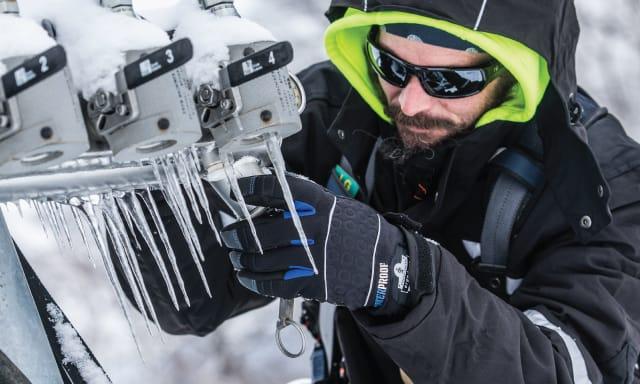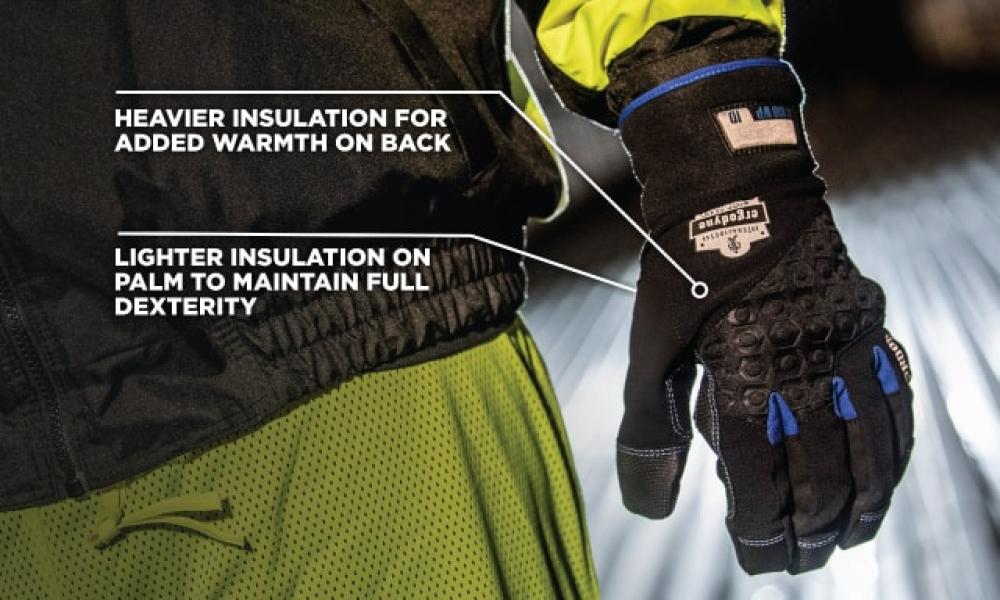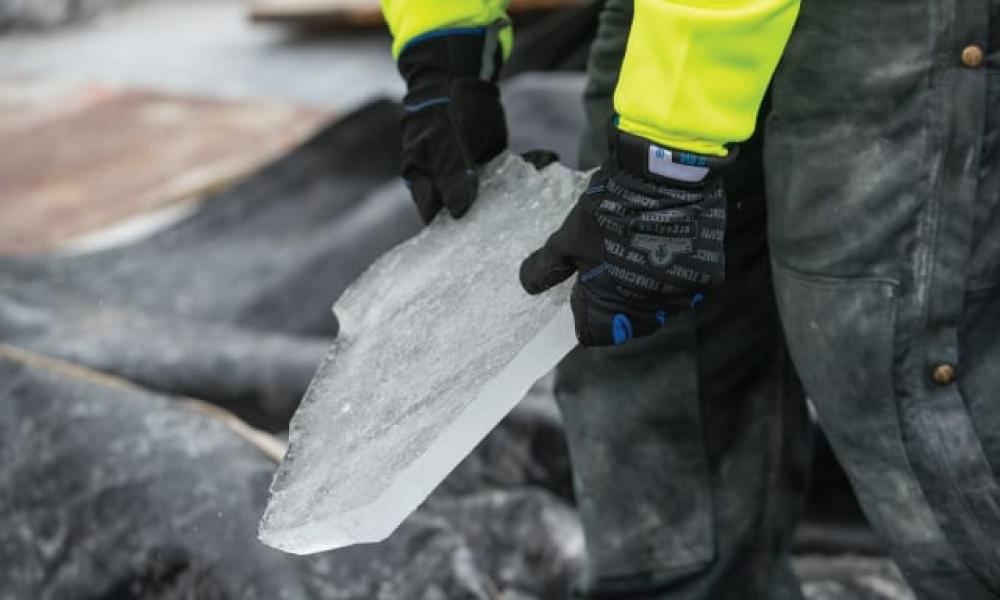Why Are My Hands Always Cold?: Your Guide To Choosing The Best Winter Work Gloves

How many shifts have ended with your hands feeling cold, wet and numb because your winter work gloves couldn’t do what they’re literally made to do? Well, and bear with us here, what if we told you it’s not always the gloves’ fault?
Many factors affect the performance of a thermal glove. We’ll take a look at common issues that alter performance and what to look for when buying thermal work gloves to keep your mitts warm and comfortable until it’s time to punch out.
WATERPROOF GLOVES
Water is a big problem when working in the cold. This is likely the primary reason your thermal gloves are uncomfortable in the cold. Moisture actively draws heat away from your body so, if your hands are wet, they’re going to feel pretty dang cold. Many thermal gloves claim to be waterproof and they probably are, but that doesn’t mean they do it well. Some gloves are made with a “waterproof” lining that is essentially just a layer of plastic that keeps water out but doesn’t allow moisture to evaporate. To be most effective, waterproofing needs to block water while simultaneously letting moisture from your hands escape.
BREATHABLE GLOVES
Look for gloves with a waterproof, breathable liner. This material has tiny pores that prevent water droplets from permeating the membrane, while still letting vapor escape. When you’re working up a sweat, vapors wick from your hands and push to the outside of the glove to evaporate. More often than not, people claiming their waterproof gloves don’t work are having an issue with the cooling of their own sweat — not water seeping in from the outside.
Gloves with a waterproof finish on the outer shell will also keep your hands dry and happy. A DWR (durable water repellent) is added to the fabric, causing water to roll right off the glove. DWR finishes are commonly used in conjunction with breathable waterproof fabrics to prevent the outer layer from becoming saturated with water — a process known as “wetting out.” DWR finish is breathable enough to shed water while still letting moisture escape the outer layer of the glove.
INSULATED GLOVES
People tend to think more is better, so gloves with more or heavier insulation must be higher quality. But more in this case can be counterproductive — gloves with too much insulation for the weather conditions will cause your hands to sweat enough that even the best gloves will have trouble wicking it away. This is why it’s crucial to choose the right level of insulation for both the job and weather conditions.
Synthetic insulation is rated in grams — 60 grams (g) means a 1 meter by 1 meter piece weighs that much. The heavier the weight, the warmer the insulation. A higher GSM (grams per square meter) means the gloves will keep your hands warmer, but you will lose hand movement and dexterity because the fabric is thicker.
- 40 to 100 grams for the average winter day above 20°F (-6°C)
- 100 to 200 grams for cold days below 20°F (-6°C)
- 200 to 400 grams for sub-zero Arctic conditions
While there are general gram per temperature recommendations, warmth is still incredibly dependent on activity level of the task at hand (no pun intended). More on that later.

Dual-zone insulated gloves put heavier-weight insulation in strategic locations, striking a nice balance to deliver warmth where you need it most. They also maximize dexterity, enabling movement that is both comfortable and natural — no more cutting off circulation (another cause of cold hands) or restriction that causes you to take the gloves off entirely. A cold weather glove, for example, might feature 80g insulation on the back to protect from cutting wind but only 40g in the palm for greater flexibility. Dual-zone insulated gloves give you the best of both worlds.
WHAT IS MY ACTIVITY LEVEL?
You’ll also want to consider how active you’ll be during your day as temperature rating varies greatly depending on how much you’re moving around. We tested a pair of our thermal gloves and found them to be effective in drastically different temperatures depending on activity level:
- Medium activity: 25 degrees F (-3C)
- High activity: -22F (-30C)
It’s important to note that levels of warmth are completely subjective and will vary from one person to the next. It’s the age-old thermostat battle — Mom is comfortable at 72, Dad calls it a sauna-like hellscape. This is why it’s tough to establish an industry standard for temperature rating gloves. Warmth depends on the user’s age, gender, metabolism, activity level and environment (taking into account everything from altitude to wind speed, humidity and climate). It really is a fine line. If the glove is too over- or under-insulated, your hands will feel cold.
WORKING CONDITIONS
The work you’re doing on a daily basis is another important consideration for glove effectiveness. Are you fully exposed to the elements? Is your workspace sheltered against the wind? What kind of surfaces do you come into contact with during the day?
Windchill is a real gamechanger — that cold wind cutting through your gear can quickly sap your body of warmth. If you’re exposed to the Mother Nature in all her fury, you may need more heavily insulated gloves to protect your hands from intense wind. In this case, gloves with a ripstop outer shell are a good choice. Other materials, like leather (especially when it becomes wet), can freeze or become stiff in the extreme cold. Coupled with a DWR finish, ripstop will stay flexible and pliable long after the job is finished.

You should also take into account the type of material you’ll be handling. Water and metal are excellent conductors of the cold, and will quickly pull warmth from your hands. Handling either will affect how your gloves perform. Extra reinforcement in the fingertips offers an added layer of protection against these surfaces.
So, when it comes to the effectiveness of winter work gloves, sometimes “It’s not you, it’s me” isn’t just a cliché. While not all gloves are up to the challenge of harsh winters, when you know exactly what to look for, you can find a well-designed pair that fits your needs like a…glove.
To learn more and find the right thermal gloves for you, check out the full line of ProFlex Thermal Gloves.

